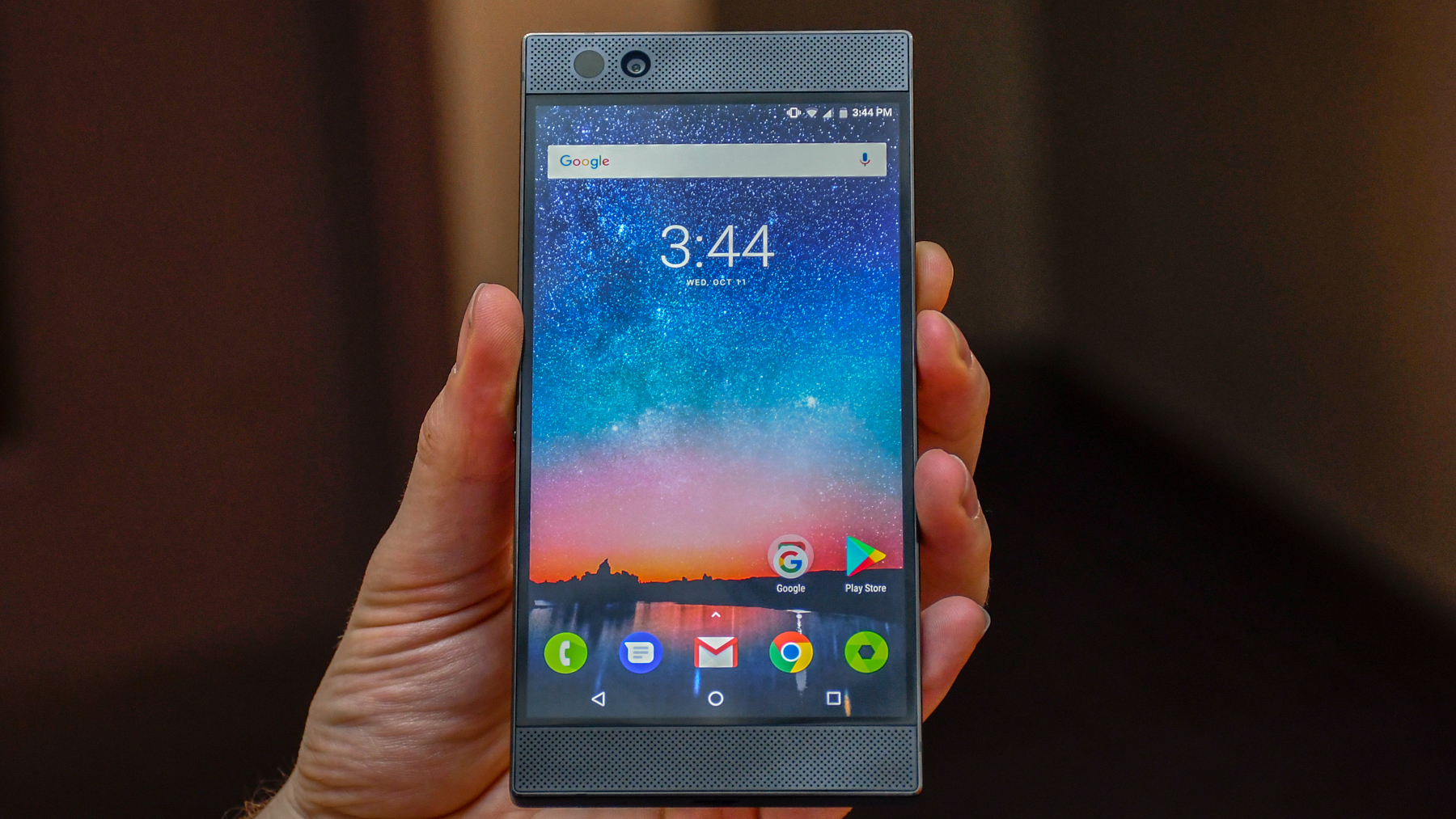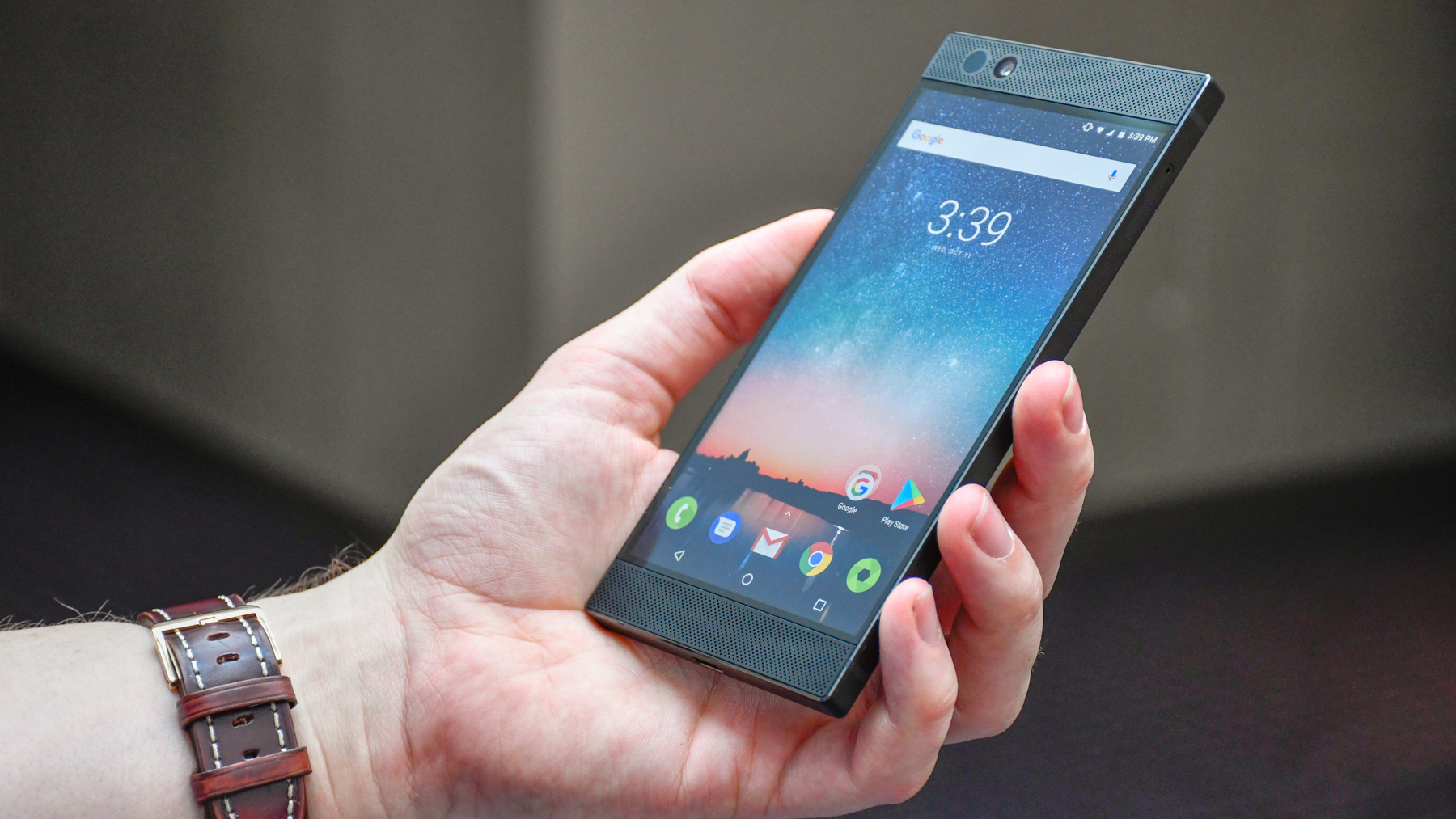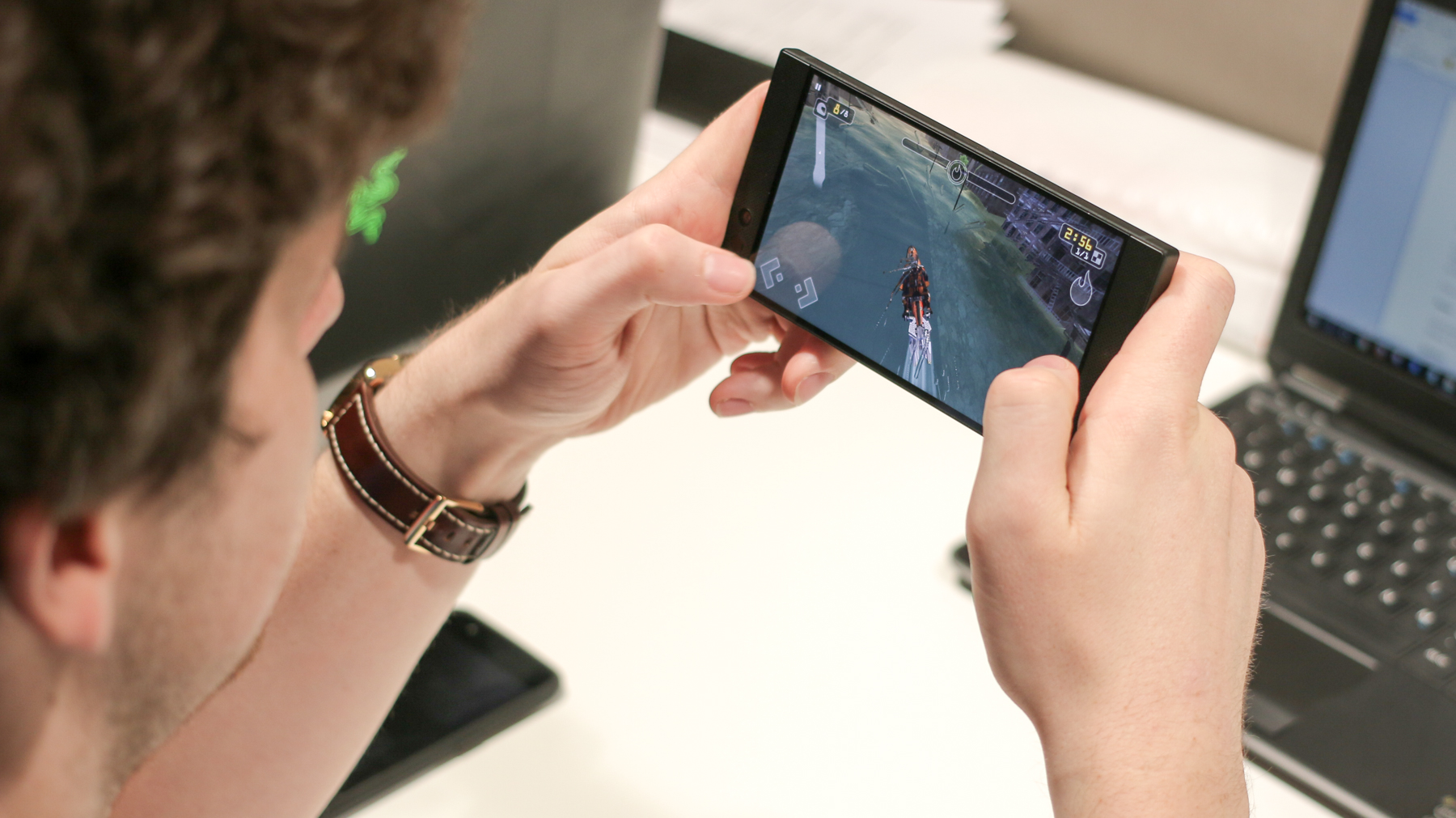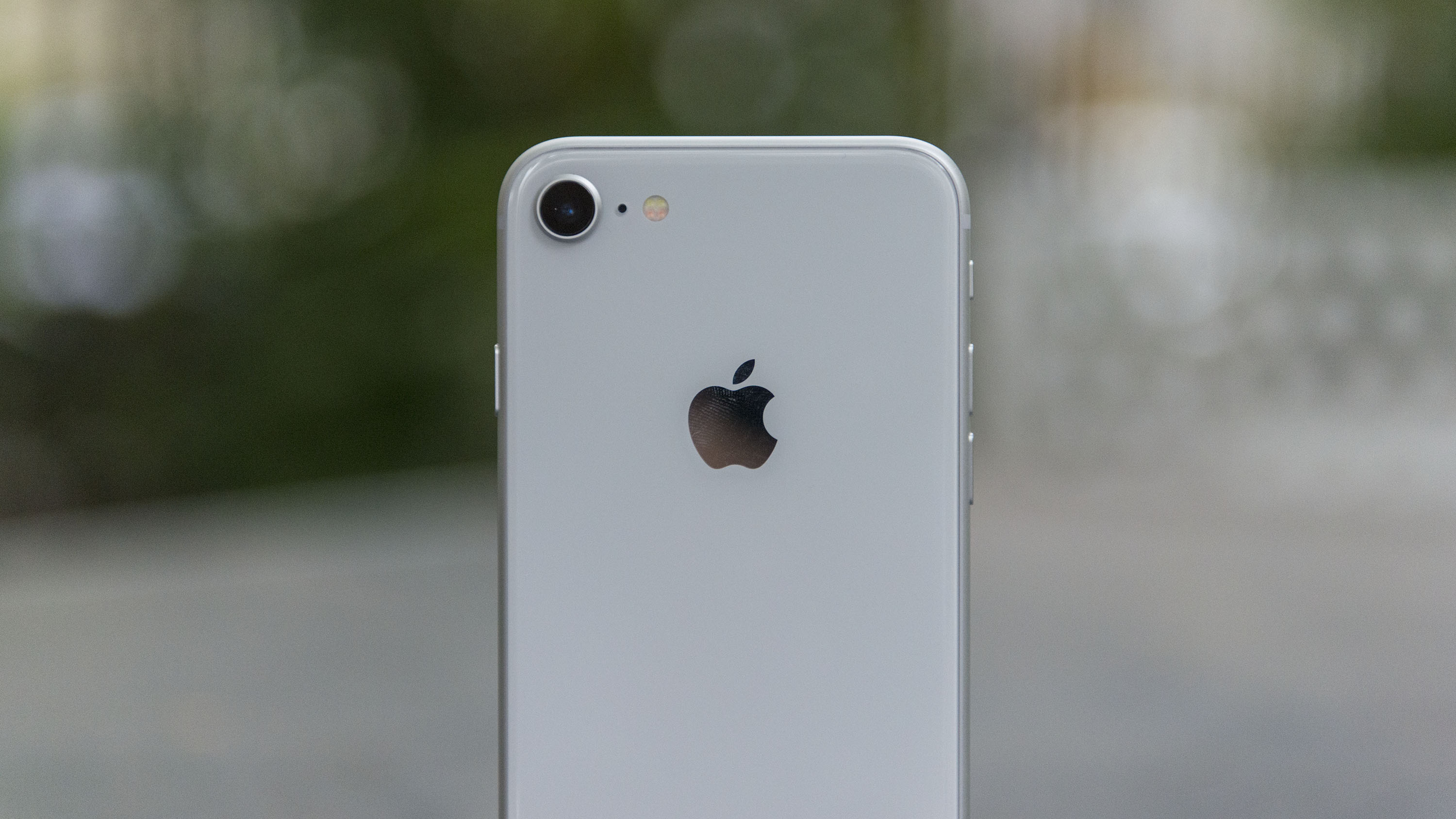Razer Phone vs iPhone 8
Game on

The Razer Phone and iPhone 8 aren’t entirely aimed at the same audience. The former being a likely niche device, built specifically for gamers, and the latter being as mainstream as mainstream gets.
But they’re both high-end handsets with high-end prices to match and they both have serious gaming skills, so there will be some crossover in their appeal.
With that in mind we’ve created this comparison, seeing how the new kid on the block compares to an old hand when it comes to design, display, power, camera, battery and price.
- Read our hands on: Razer Phone review
Razer Phone vs iPhone 8 design
The Razer Phone isn’t much of a looker, with a blocky design inherited from the Nextbit Robin (a phone by a company Razer purchased). The design isn’t helped by its fairly plain black build, 158.5 x 77.7 x 8mm dimensions and fairly hefty 197g weight.
There is some flair to the design though, with Razer’s tangled snake logo breaking up the black expanse of the phone's back, and huge speakers above and below the screen, which based on our hands-on review deliver the best sound you’ll get from smartphone speakers.

We'd wager that to most people's tastes the iPhone 8 is in a whole different league though.
While it has an arguably slightly dated and definitely over-familiar design, especially in the face of the iPhone X, it still looks good, with a relatively compact and lightweight 138.4 x 67.3 x 7.3mm, 148g build and a curvy glass and metal shell available in silver, gold or space grey.
Sign up for breaking news, reviews, opinion, top tech deals, and more.
However, the iPhone 8 also has large bezels above and below the display, with the bottom bezel used to house a fingerprint scanner (which you’ll find on the right edge of the Razer Phone), and neither phone has a 3.5mm headphone port.
Get a closer look at the Razer Phone with our hands on video below
Razer Phone vs iPhone 8 display
The Razer Phone has a 5.72-inch 1440 x 2560 LCD display, which aims to stand out through its 120Hz variable refresh rate and a frame rate of up to 120fps.
Those features should make it seem smoother and snappier than other phones, which could be especially beneficial when gaming, but potentially useful during any type of screen interaction.
The iPhone 8 meanwhile has a 4.7-inch 750 x 1334 LCD screen, meaning it’s both lower resolution and has a lower pixel density.

It’s also just much smaller, which could be good or bad depending on what you want from your phone. As a gaming and media-focused device the big screen on the Razer Phone will of course be beneficial, but if you want something compact that can more easily be used with one hand the iPhone 8 could be a better choice.
The iPhone 8 doesn’t have the Razer Phone’s refresh rate, but it does have a True Tone screen, meaning it can automatically adjust the white balance based on your environment, so it always looks optimal.
Razer Phone vs iPhone 8 OS and power
The octa-core Snapdragon 835 is the chipset powering the Razer Phone. That’s the same chipset as you’ll find in the likes of the HTC U11, LG V30 and US versions of the Samsung Galaxy Note 8. It’s paired with 8GB of RAM, a spec which few phones outside the OnePlus 5 can match.
The iPhone 8 on the other hand has a hexa-core A11 Bionic chipset and 2GB of RAM. That might sound like a lesser spec on paper, but in practice the iPhone 8 delivered near faultless performance in our review.

As for operating systems, the Razer Phone runs Android Nougat, with an update to Android Oreo promised. That’s overlaid with the heavily customizable Nova launcher.
The iPhone 8 meanwhile runs iOS 11, which is less customizable, but arguably has a better selection of games – a point worth making when the Razer Phone is largely sold on its gaming ability.
Neither phone should have any shortage of space, with the Razer Phone packing in 64GB plus a microSD card slot, while the iPhone 8 comes with a choice of 64GB or 256GB.
Razer Phone vs iPhone 8 camera and battery
Razer’s opted for a dual-lens 12MP camera on its first phone. There’s an f/1.75 wide-angle lens and an f/2.6 telephoto one, allowing for optical zoom. We haven’t been able to properly put the camera to the test yet but it’s worth noting that there’s little in the way of modes and options – you basically just point and shoot.
The iPhone 8 has just a single-lens 12MP f/1.8 camera, but one which we found could take decent photos in our review, and which is also a fairly simple point and shoot option.

There’s also an 8MP camera on the front of the Razer Phone and a 7MP one on the iPhone 8.
As for battery, you get a big 4,000mAh one in the Razer Phone, which the company claims allows you to ‘play all day’.
We’ll be sure to test that in our full review, but we’d be surprised if it didn’t last longer than the 1,821mAh battery in the iPhone 8, a battery which our review found would just barely last a day with moderate mixed use.
Razer Phone vs iPhone 8 price
The Razer Phone is priced at $699 / £699 (around AU$890) SIM-free, while the iPhone 8 starts at $699 / £699 / AU$1,079 for a comparable 64GB model, making it exactly the same price in the US and UK.
Choose a 256GB model and the iPhone 8 rises to $849 / £849 / AU$1,329, which is an option you don’t have with the Razer Phone, though you can always invest in a microSD card of a similar size, which is likely to cost you less overall.
Takeaway
When it comes to specs and features the Razer Phone ticks a lot of boxes, arguably more even than the iPhone 8. It has a dual-lens camera, a big QHD screen, loads of power and a huge battery, but its design is unlikely to appeal anywhere near as much to most people.
How well the Razer Phone will deliver on its specs remains to be seen, but with all that plus beefy speakers it could well appeal to gamers – which is seemingly the whole point of the phone.
For everyone else it’s probably unlikely to worry the iPhone 8, especially as they’re priced exactly the same.
- Getting a Razer Phone? Make sure to grab these games
James is a freelance phones, tablets and wearables writer and sub-editor at TechRadar. He has a love for everything ‘smart’, from watches to lights, and can often be found arguing with AI assistants or drowning in the latest apps. James also contributes to 3G.co.uk, 4G.co.uk and 5G.co.uk and has written for T3, Digital Camera World, Clarity Media and others, with work on the web, in print and on TV.